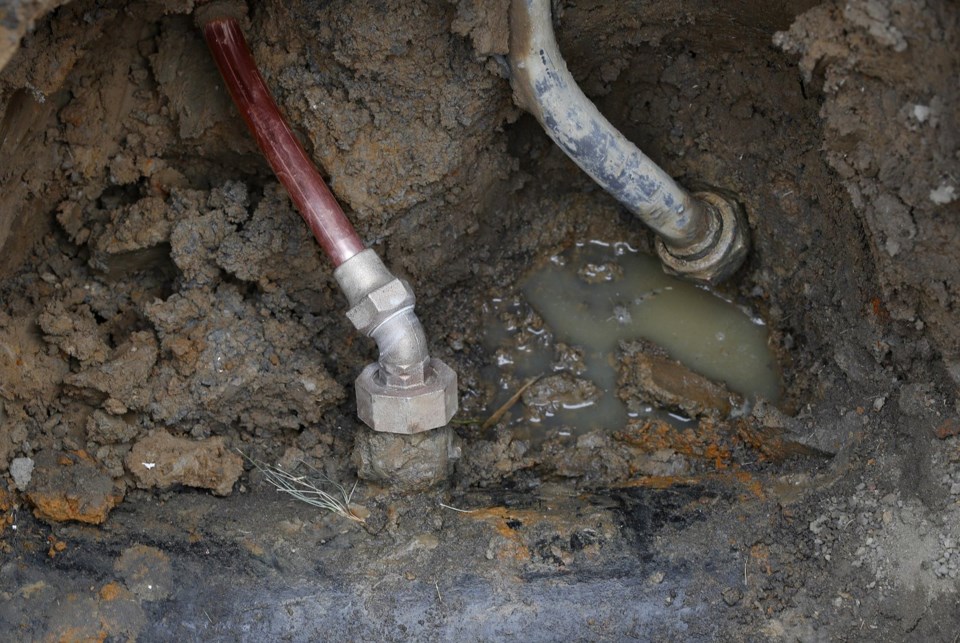WASHINGTON (AP) — A decade after the raised alarms about the continuing dangers of lead in tap water, President Joe Biden is setting a 10-year deadline for cities across the nation to replace their lead pipes, finalizing an aggressive approach aimed at ensuring that drinking water is safe for all Americans.
Biden is expected to announce the final Environmental Protection Agency rule Tuesday in the swing state of Wisconsin during the final month of . The announcement highlights an issue — safe drinking water — that Kamala Harris has prioritized as vice president and during her presidential campaign. The new rule supplants a looser standard set by former President Donald Trump's administration that did not include a universal requirement to replace lead pipes.
Biden and Harris believe it’s “a moral imperative” to ensure that everyone has access to clean drinking water, EPA Administrator Michael Regan told reporters Monday. “We know that over 9 million legacy lead pipes continue to deliver water to homes across our country. But the science has been clear for decades: There is no safe level of lead in our drinking water.''
The rule is the strongest overhaul of lead-in-water standards in roughly three decades. Lead, a heavy metal used in pipes, paints, ammunition and many other products, is a neurotoxin that can cause a range of disorders from behavioral problems to brain damage. Lead lowers IQ scores in children, stunts their development and increases blood pressure in adults.
The EPA estimates the stricter standard will prevent up to 900,000 infants from having low birthweight and avoid up to 1,500 premature deaths a year from heart disease.
The new regulation is stricter than one and requires water systems to ensure that lead concentrations do not exceed an “action level” of 10 parts per billion, down from 15 parts per billion under the current standard. If high lead levels are found, water systems must inform the public about ways to protect their health, including the use of water filters, and take action to reduce lead exposure while concurrently working to replace all lead pipes.
Lead pipes often impact low-income urban areas the most. They are most commonly found in older, industrial parts of the country, including , Cleveland, New York, Detroit and Milwaukee, where Biden will announce the standards on Tuesday.
The new rule also revises the way lead amounts are measured, which the number of cities and water systems that are found to have excessive levels of lead, the EPA said.
To help communities comply, the agency is making available an additional $2.6 billion for drinking water infrastructure through The agency also is awarding $35 million in competitive grants for programs to reduce lead in drinking water.
The 10-year timeframe won't start for three years, giving water utilities time to prepare. A limited number of cities with large volumes of lead pipes may be given a longer timeframe to meet the new standard.
Biden will make the announcement in Milwaukee, a city with the fifth-highest number of lead pipes in the nation, according to the EPA. Officials there are using money from the federal infrastructure law to accelerate lead-pipe replacement work and meet a goal to remove all lead pipes within 10 years, down from an initial 60-year timeframe.
Lead pipes can corrode and contaminate drinking water; removing them sharply reduces the chance of a crisis. In Flint, more than a decade ago made it more corrosive, spiking lead levels in tap water. Flint was the highest-profile example among numerous cities that have struggled with stubbornly high levels of lead, including , Benton Harbor, Michigan, and Washington, D.C.
The original lead and copper rule for drinking water was enacted by the EPA more than 30 years ago. The rules have when lead levels rose too high.
“I think there is very broad support for doing this. Nobody wants to be drinking lead-contaminated tap water or basically sipping their water out of a lead straw, which is what millions of people are doing today," said Erik Olson, a health and food expert at the nonprofit Natural Resources Defense Council, speaking generally about the EPA’s efforts to replace lead pipes ahead of the official announcement.
Actually getting the lead pipes out of the ground will be an enormous challenge. The infrastructure law approved in 2021 provided $15 billion to help cities replace their lead pipes, but the total cost will be several times higher. The requirement also comes as the Biden administration proposes strict new drinking water standards for forever chemicals called PFAS, or per- and polyfluoroalkyl substances. These standards will also improve public health although at a cost of billions of dollars.
The American Water Works Association, an industry group, said when the proposed rule was announced that it supports EPA’s goals, but warned that costs could be prohibitive.
Another hurdle is finding the lead pipes. Many cities do not have accurate records detailing where they are. Initial pipe inventories are due this month, and many cities have said they don't know what substances their pipes are made of.
___
Phillis reported from St. Louis.
___
The Associated Press receives support from the Walton Family Foundation for coverage of water and environmental policy. The AP is solely responsible for all content. For all of AP’s environmental coverage, visit
Matthew Daly And Michael Phillis, The Associated Press




